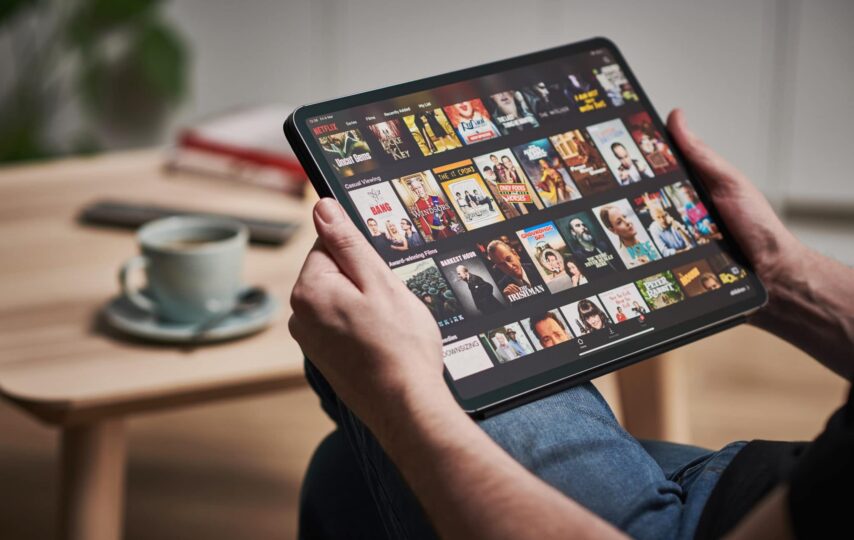Netflix and chill is a term we hear quite commonly from the Millennials and Generation Z population. While cable TV used to be the craze of every household looking for some indoor entertainment. The trend has moved towards streaming services. There are currently many streaming services available such as Amazon, Disney+, Peacock, and the list goes on. However, they have not yet reached the commercial global value that Netflix has achieved. Many argue that the diversity of available shows and the effectiveness of localized translations in breaking communication barriers are the reasons behind this. Thanks to various multimedia localization solutions, users can view a wide range of shows in their native languages. For example, people living in India can watch ‘Stranger Things’ in Hindi if they please or watch it in English with subtitles in Hindi. This is a prime example of professional dubbing and professional subtitling services.
Netflix: Background and History
You can say that Netflix transitioned through 3 different stages: DVD rentals, streaming services, and original content creation. Let’s dwell into them in more detail:
DVD Rental Service (1997-2007)
Netflix is founded by Marc Randolph and Reed Hastings in California. The company started as a DVD rental service provider in 1999. Users are given the option to rent the movie online or have it delivered by mail. The USP for this business was that users pay a monthly fee and can rent as many DVDs as they want. This convenience helped the company become popular very quickly. Moreover, the website was launched in 1998. During its peek as a movie rental service provider, Netflix shipped over a million DVDs per day.
Streaming Service Transition (2007-2010)
The CEOs could see the potential of the internet and began offering streaming services for users. Now instead of waiting for a physical copy, users can stream their favorite shows on their computers. In 2011, Netflix abandoned the DVD rental plan and solely relied on providing streaming services. At first, the streaming service was free for DVD subscribers. However, as internet speeds and technology improved, the DVD subscription idea was dropped. Moreover, the company began and still is relying on streaming services solely.
Expansion into Original Content (2011-Present)
From 2011 and onwards Netflix became solely a streaming company and began expanding its services to other countries. By availing of a multimedia localization solution, Netflix dubbed and subbed its content to present it to foreign populations. Stranger Things is a very good example of localized original Netflix content. You can watch the series in 9 dubbed languages and 12 subtitled languages.
By 2016, Netflix reached over 190+ countries. It started producing original content such as movies, series, stand-up specials, documentaries, and more. Furthermore, this strategy was first implemented by Netflix and it helped them establish a separate identity for itself. You will notice that professional subtitling services are more commonly availed by Netflix.
What Localization Services Does Netflix Utilize?
Given that Netflix is specifically for movies, seasons, documentaries, and stand-up. Netflix uses three main forms of the multimedia localization solution.
Localized Translations for Scripts
Netflix is not widely recognized for enforcing strict censorship. However, Netflix still offers certain forms of censorship in the form of localization. Professional linguists refine the content for various audiences while translating it before subbing or dubbing it. This can include changing phrases and words to make sense for other populations.
Localized Subbing
The most common form of multimedia localization is through professional subtitling services. Netflix offers a wide range of subbed shows including anime, documentaries, movies, and even games. Subbing is relatively cheaper than dubbing. Netflix usually offers more subbed languages in their content because it is inexpensive and quicker to do.
Localized Dubbing
The last main type of localization that Netflix does is dubbing. Dubbing is the best form of localization in video content forms. Because it ensures maximum attention from the users. Watching dubbed movies also has minimal barriers. Because to effectively watch a dubbed movie, all you need is to pay attention. While, in subbed video content forms, the user needs to be able to read efficiently.
What to Expect in the Future?
We can expect Netflix to continue being successful in the global entertainment business. Given that technology is improving at a rapid pace. We will see more engagement and more inclusion of diverse societies in the world. Netflix will only increase its reliance on good localization services to grow. Given that Netflix relies on the number of subscriptions, its price of service will remain constant or affordable enough.
Conclusion
When you are deciding whether to utilize a certain service to expand your reach or grow your business. It is a good idea to see examples or case studies. Such forms of research allow you to make a more informed decision. If for example, you are thinking that you can increase your viewership numbers by availing multimedia localization? Then you are probably thinking correctly. Because yes, if more people can understand what you are saying, then you will increase your chances of establishing more subscribers. However, at the same time, you need to be sure that people want to watch your content.



